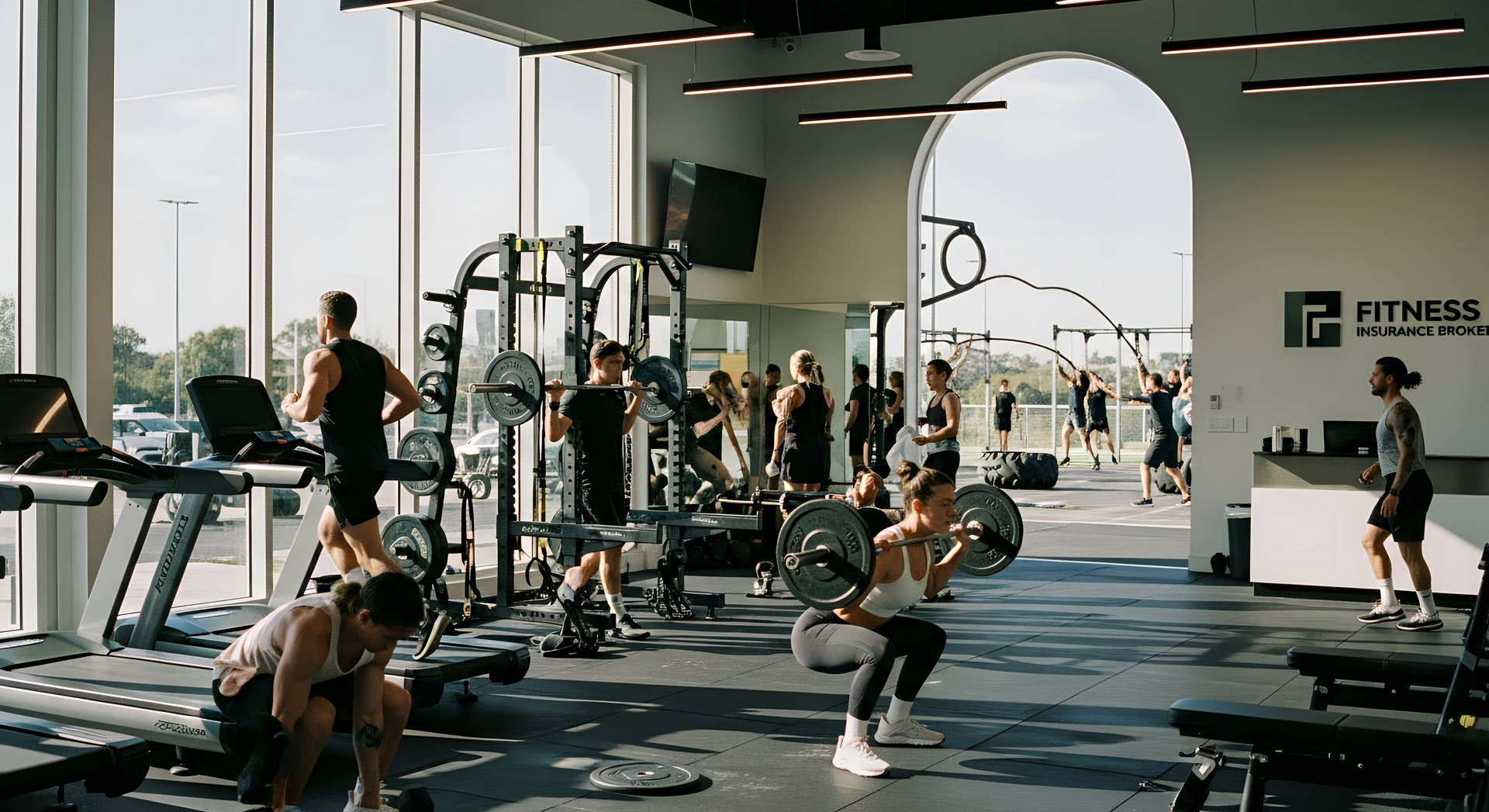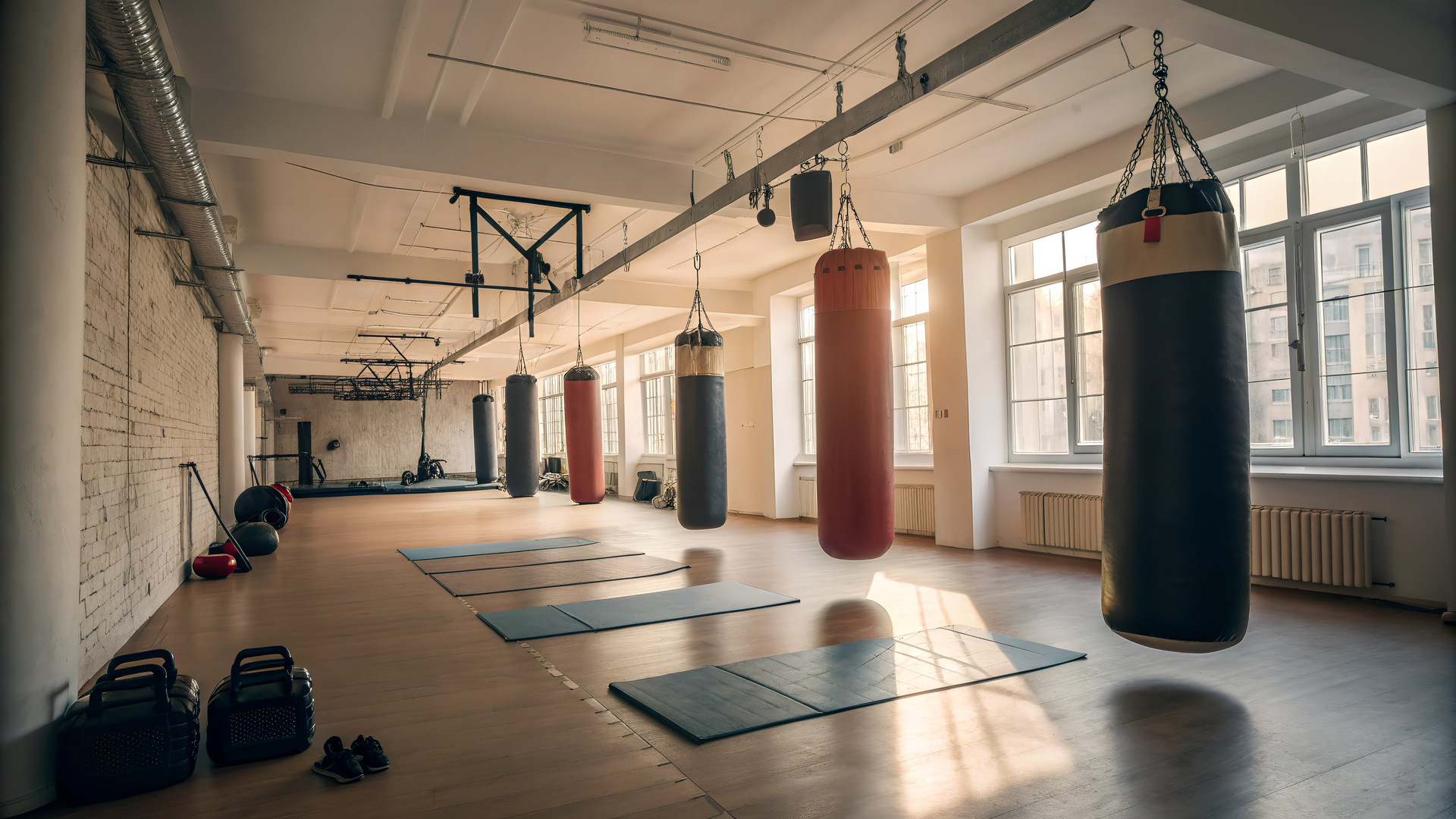The Ultimate Guide to Fitness Insurance in Australia: 2026 Trends & Owner Essentials
Essential Insurance Coverage for Gyms, Studios, and Sports Clubs in Australia

At Fitness Insurance Brokers, a specialized fitness and sports brokerage, we understand that running a fitness facility in Australia is a high-energy, high-reward venture. You create a community, change lives, and build a business around your passion.
But with every dropped dumbbell, every high-intensity class, and every new member sign-up, there’s an element of risk.
The floor is wet in the change room. A new member overestimates their deadlift. A treadmill motor seizes and causes an injury.
These are not “if” scenarios; for many fitness business owners, they are “when.”
The Australian fitness industry is booming, but this growth comes with a complex and expanding web of liabilities. The problem is that many owners are operating under a dangerous assumption: they believe their “standard” business insurance policy has them covered.
It almost certainly does not.
A generic policy designed for a retail shop or an office fails to understand the specific, high-stakes risks of the fitness world. This "fitness-sized gap" in your coverage is where a business's future can be lost.
This guide is not about fear—it’s about foresight. As specialists in both the fitness/martial arts industry and the insurance industry, we’ll navigate the entire landscape of fitness insurance in Australia. This is your complete guide to protecting your facility, your staff, your members, and your hard-earned legacy.
Part 1: The "Fitness-Sized Gap": Why Your Standard Business Policy Fails
Let’s address the most common and costly mistake first. Many owners get a “Business Owners Policy” or “Public Liability” from a general insurer, tick the box, and assume they’re safe.
Here’s why that’s a critical error:
- Inherent Risk Profile: An insurance underwriter (the person who sets the price and terms) sees a fitness facility very differently than an office or retail store. Your “business activity” involves physical exertion, heavy equipment, and potential for bodily harm. This high-risk profile is often explicitly excluded from standard policies unless you use a specialist.
- The "Professional Advice" Blind Spot: Does your gym offer personal training? Group classes? Nutrition advice? As soon as your staff (or even contractors) give any instruction, you’ve crossed into the realm of “professional advice.” If a member claims your trainer’s program caused a spinal injury, your standard Public Liability policy won’t cover it. That’s a Professional Indemnity claim.
- The Waiver Myth: “But all my members sign a waiver!” This is a line we hear every day. In Australia, a waiver is not an ironclad shield. It can deter frivolous claims, but it generally cannot protect you from claims of negligence. If your equipment was poorly maintained or your floor was knowingly wet, and someone got hurt, a waiver is unlikely to save you in court.
- Participant-to-Participant Liability: What happens when one member accidentally drops a weight plate on another member’s foot? Or two members collide during a class? Many standard policies exclude this “participant-to-participant” liability, leaving you exposed.
A
specialized fitness policy is written to cover these exact scenarios. A general one is written to exclude them.
The Core Pillars: Your Non-Negotiable Fitness Insurance Policies
Think of your insurance structure like a strength program. You need a solid foundation before you can add the accessories. For an Australian fitness business owner, that foundation consists of three core policies, often bundled into a “Fitness Business Package.”
1. Public & Products Liability Insurance
This is the big one. It’s the most fundamental cover for any business that interacts with the public.
What it Covers: It protects you from the financial fallout of claims alleging your business’s negligence caused bodily injury to a third party (a member, a visitor, a delivery driver) or damage to their property.
Fitness-Specific Scenarios:
- A member slips on a wet floor in the change room and breaks their wrist.
- A visitor trips over a misplaced dumbbell and suffers a concussion.
- Your signage falls and damages a member’s parked car.
What to Look For:
- The Limit: Most gyms should carry $20 million in coverage. $10 million is often the minimum, but with legal costs and potential payouts rising, $20M is the new standard.
- Inclusions: Does it cover events held outside your gym (e.g., a park boot camp)? Does it cover your child-minding/crèche facilities?
2. Professional Indemnity Insurance
This is arguably the most critical and misunderstood policy for fitness facilities. If Public Liability covers accidents from your premises, Professional Indemnity covers financial loss or injury from your advice.
What it Covers: It protects you against claims of a breach of professional duty. In simple terms: bad advice, negligence, or an omission in the service you provide.
Fitness-Specific Scenarios:
- A personal trainer prescribes an exercise program that exacerbates a member’s pre-existing back condition, leading to surgery.
- A member claims your group fitness instructor failed to provide a safe alternative for a high-impact move, resulting in a torn ACL.
- You offer nutrition plans, and a member has a severe allergic reaction based on your advice.
What to Look For:
- Contractor Coverage: Does your policy extend to cover the actions of your independent contractors (PTs, yoga instructors)? Or does it require them to have their own policy? Relying on contractors’ insurance alone is risky.
3. Property & Equipment Insurance
Your facility and its contents are your single biggest capital investment. A standard “contents” policy isn’t built for the unique assets of a fitness business.
What it Covers: Loss or damage to your physical assets from insured events like fire, storm, water damage, malicious damage, and theft.
Breaks down into:
- Building: If you own the property.
- Fit-Out: Covers your investment in mirrors, flooring, reception desks, and change rooms.
- Contents & Stock: Covers your treadmills, squat racks, free weights, computers, and any retail products.
Critical Add-On: Equipment Breakdown
This is not the same as standard property damage. This policy covers the cost of repairing or replacing equipment due to mechanical or electrical failure.
Scenario: The main motor on your $15,000 incline treadmill suddenly burns out. A standard property policy won’t cover this. An Equipment Breakdown policy will.
Part 3: Beyond the Basics: The Policies That Save Businesses
Once your core “Big Three” are solid, a smart owner looks to cover the other, less obvious risks. These are the policies that separate the amateurs from the professionals.
1. Cyber Liability Insurance
Why a gym? “I just run a gym, I’m not a tech company.” Well, you are. You hold sensitive data. Your membership management software (like Mindbody or Zen Planner) stores names, addresses, phone numbers, birthdates, and credit card details.
The Risk: This data is a goldmine for hackers. A breach doesn’t just mean a fine; it means notifying every member, paying for credit monitoring, and managing a PR nightmare.
What it Covers: The high costs of managing a data breach, including forensic IT investigation, legal advice, PR management, and potential ransomware demands.
2. Business Interruption Insurance
The “What If?” Policy: What if a fire in the neighboring restaurant forces your gym to close for 3 months due to smoke damage? Your Property policy will pay to fix the fit-out, but who pays for your lost membership revenue?
What it Covers: Your lost gross profit and fixed operational costs (like rent and wages) while your business is unable to trade due to an insured event.
3. Management Liability Insurance
Protecting You, The Owner: This isn’t about protecting the business from public claims; it’s about protecting you from claims of mismanagement.
The Risk: You are personally exposed to claims from employees, regulators, and creditors.
Part 4: The New Frontline: 2026 Trends Redefining Fitness Risk in Australia
The fitness industry doesn’t stand still, and neither do the risks. Whether you’re a small PT studio, a multi-branch martial arts association, or a large 24/7 chain, here are the key trends to watch:
Trend 1: The 24/7 “Unstaffed Access” Model
The 24/7 gym model is incredibly popular, but it shifts your risk profile dramatically.
Risk: Injuries happen with no staff on hand.
Insurance Response: Ensure 24/7 access is declared and meet strict requirements (CCTV, panic buttons, etc.).
Trend 2: The Hybrid Model & Digital Fitness
Your premises are no longer just your four walls; they’re in your member’s living room.
Risk: Injury during at-home workouts based on your content.
Insurance Response: Extend your Professional Indemnity policy to cover online instruction.
Trend 3: The Wellness Boom (Saunas, Cryo, & Allied Health)
Gyms are becoming wellness hubs, adding saunas, cryo chambers, and in-house physios.
Risk: Each service carries specialist liability.
Insurance Response: Declare every new service to your insurer.
Trend 4: The "Gig Economy" Trainer & Contractor Management
More gyms are renting space to independent contractors like PTs, yoga instructors, and martial arts trainers.
Risk: Contractors’ clients getting injured and suing.
Insurance Response: Ensure your policy covers contractor actions and that they have adequate insurance.
Conclusion: From “Covered” to “Protected” with a True Specialist
Your fitness business is more than just a business; it's a community. Protecting it requires more than just passion—it requires a robust defense.
The cheapest gym insurance isn’t always the best for your fitness business. It’s about getting the right coverage for your operation, ensuring your diverse fitness activities and facilities are covered.
As specialists, Fitness Insurance Brokers are here to help. From small PT studios to large multi-branch gyms, we cover every aspect of your fitness business, ensuring you’re protected every step of the way.
Get a Quote Today:
Call: 03 8201 9908




